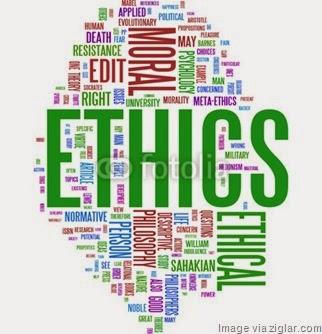 Many people seem to have the sense that ethics are spiraling downward in business, yet most business professionals and entrepreneurs I know don’t believe they can make a difference. They don’t realize that if they don’t take an active role in the solution, they really become part of the problem.
Many people seem to have the sense that ethics are spiraling downward in business, yet most business professionals and entrepreneurs I know don’t believe they can make a difference. They don’t realize that if they don’t take an active role in the solution, they really become part of the problem.
I do believe that most business people want to do the right thing, but many just don’t have the skills to develop an unemotional ethical position, or confidence to act on their ethical beliefs, or simply are not sure how to go about making a difference in their daily actions, without jeopardizing their own career.
Most people don’t need tools to agree on the ethical problem with Lockheed bribing foreign officials to get business, but many may come to different conclusions on how safe a startup’s innovative new child car seat has to be before it is sold. If people are dying of cancer every day, how many clinical trials should be required for a new drug that clearly saves some lives?
I found some good analytical tools on how to sharpen your own ethics sense in a new book by Mark Pastin, “Make an Ethical Difference.” Pastin has consulted with many organizations around the world on ethics issues, and I like his practical steps to get beyond the emotion and the theoretical, to pragmatic yet ethical solutions for tough problems:
-
Identify the ground rules of the all parties. When a situation presents an ethical issue, look beyond the actions of individuals, groups, and organizations to uncover the ground rules of each that help explain their actions. Only then can you understand what you have to change to be a successful ethical change agent.
-
Reason backward to find the interests. Summarize the possible outcomes, and reason backward from each to find what interests each outcome will serve and for whom. Unstated or hidden interests are often the key to resolving ethical issues. Support outcomes that advance many interests without violating any ground rules.
-
Face the relevant facts. Look for facts that all parties, irrespective of their ground rules and interests, will agree upon. Then look for non-debated facts, and finally contested facts. The acid test for each fact is that if it were true, would it change your judgment as to what is right in the situation. Now you have the potential to make an ethical difference.
-
Stand in the shoes of affected parties. Once you understand who is affected, reduce the distance between you and them. Pick ones that differ from you the most and meet with individuals or group members. Verify or reject each interest and ground rule. You remove obstacles to the functioning of the ethics eye by bringing its objects closer.
-
Use the global benefit approach to rate possible outcomes. Ask which course of action produces the greatest balance of benefit over harm for all concerned. You first ask who counts, then what counts, as a benefit or harm in considering the possible outcomes. Any action with great benefits without violating ground rules could be the right one.
Real agreement in ethics only exists when what your ethics eye shows to be the right action matches what the ethic eyes of others see as the right action at the same time. Thus these steps are part of an iterative convergence process that all relevant parties must follow to reach the right solution. Pastin provides examples of this process transforming good ethics into decisive action.
It does work, but in all cases each of us has to accept at the outset that our own ethical perspective may be the one that changes in the process of seeking ethical agreement. There is no room in any business decision for hard unbending positions, with closed eyes and ears and an open mouth.

